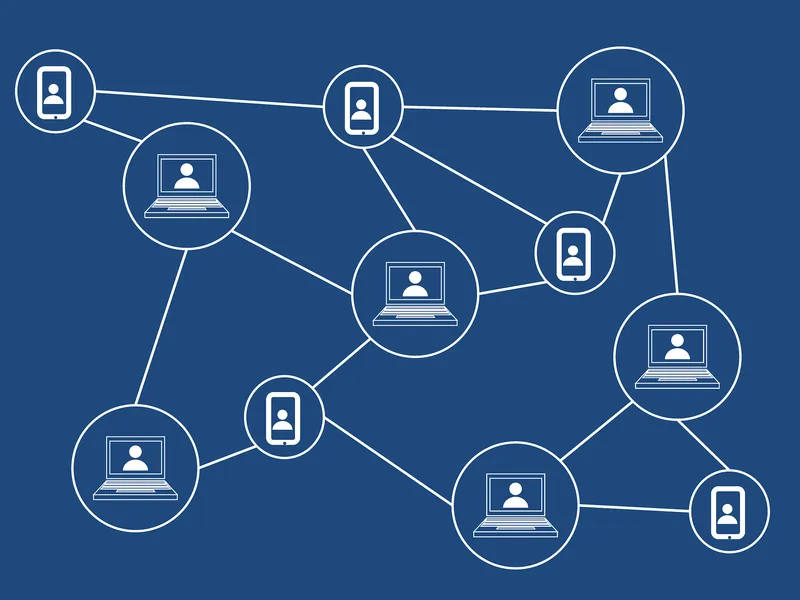Unveiling the power of blockchain technology: A beginner's handbook
Blockchain offers transparency by providing a shared and immutable record of transactions. Each participant in the network can view and verify the information, promoting trust and reducing the need for intermediaries.
Blockchain can be described as a decentralised, distributed ledger system that records and verifies transactions across multiple computers. It operates on a peer-to-peer network, eliminating the need for intermediaries and central authorities.
Blockchain technology uses cryptographic principles to ensure the security and integrity of data. Transactions are grouped into blocks and linked together in a chronological chain. Each block contains a unique identifier called a hash, and any modifications to the data would result in a change in the hash, thus alerting the network to tampering attempts.
Benefits of blockchain
One of the key advantages of blockchain is its robust security features. As data is stored across multiple computers, it becomes highly resistant to hacking and unauthorised access. Additionally, the use of cryptographic techniques ensures the integrity of the information stored on the blockchain.
Blockchain offers transparency by providing a shared and immutable record of transactions. Each participant in the network can view and verify the information, promoting trust and reducing the need for intermediaries. This transparency can be particularly useful in areas such as supply chain management and financial transactions.
Blockchain has the potential to significantly reduce costs in various industries. By eliminating intermediaries, businesses can save on transaction fees and other associated costs. Additionally, the transparency of blockchain reduces the need for audits and reconciliation, further reducing expenses.
Blockchain technology has the potential to streamline processes and reduce inefficiencies. Smart contracts, which are self-executing contracts with predefined rules, further enhance efficiency by automating contract execution.
Some applications of blockchain
Cryptocurrencies

One of the most well-known applications of blockchain is in the realm of cryptocurrencies. Blockchain forms the foundation of digital currencies like Bitcoin and Ethereum, enabling secure and transparent peer-to-peer transactions without the need for intermediaries or banks.
Supply chain management
Blockchain has the potential to revolutionise supply chain management by providing end-to-end visibility and traceability. Through blockchain, participants can track the movement of goods, verify authenticity, and ensure compliance with regulations. This transparency helps eliminate counterfeit products and improves trust among stakeholders.
Healthcare
Blockchain technology can address critical challenges in the healthcare industry, such as data security and interoperability. By storing patient records on a blockchain, healthcare providers can securely access and share patient information, ensuring data integrity and privacy. This can streamline processes, improve patient outcomes, and enable more effective healthcare delivery.
Voting systems
Blockchain-based voting systems have the potential to change the way elections are conducted. Traditional voting methods often face challenges such as voter fraud, manipulation, and disputes over the validity of results. With blockchain technology, these issues can be addressed effectively.
In a blockchain-based voting system, each vote is recorded as a transaction on the blockchain. The transparent and immutable nature of blockchain ensures that once a vote is recorded, it cannot be altered or tampered with. This eliminates the possibility of unauthorised changes to the voting data, providing a high level of security and integrity.
Challenges and limitations of blockchain
One of the primary challenges facing blockchain technology is scalability. As the number of transactions increases, the network can become slower and less efficient. However, ongoing research and the development of new protocols aim to address this issue and improve blockchain scalability.
Blockchain operates in a relatively unregulated space, which can raise concerns regarding compliance and legal frameworks. Governments and regulatory bodies are still navigating how to effectively regulate blockchain technology while balancing innovation and consumer protection.
The future potential of blockchain
The future of blockchain technology looks promising. As the technology evolves and matures, scalability solutions, such as Sharding and layer 2 protocols, are being developed to address the scalability challenge. Additionally, the emergence of enterprise blockchain solutions and collaborations between industry players indicate a growing acceptance and adoption of blockchain in mainstream applications.
How to get started with blockchain
Learning resources
Begin by educating yourself about the fundamentals of blockchain technology. There are numerous online courses, tutorials, and books available that provide a comprehensive understanding of blockchain.
Joining blockchain communities
Engage with blockchain communities and forums to connect with like-minded individuals and experts in the field. Participate in discussions, ask questions, and stay updated on the latest developments.
Exploring blockchain applications
Dive into practical applications of blockchain by exploring existing projects and platforms. This hands-on experience will help you understand how blockchain is being implemented across different industries.
Edited by Affirunisa Kankudti








